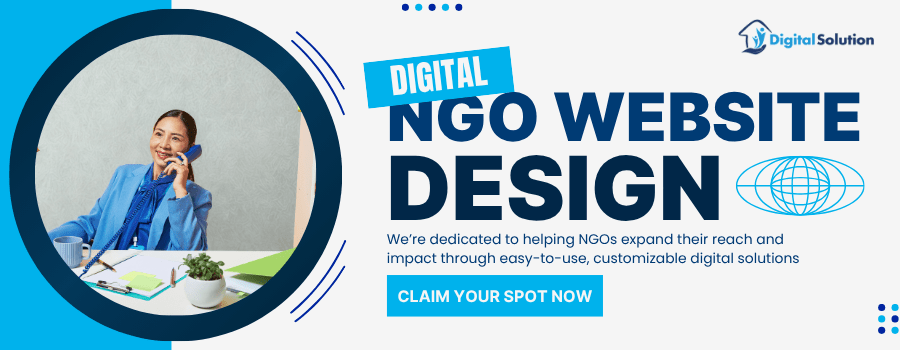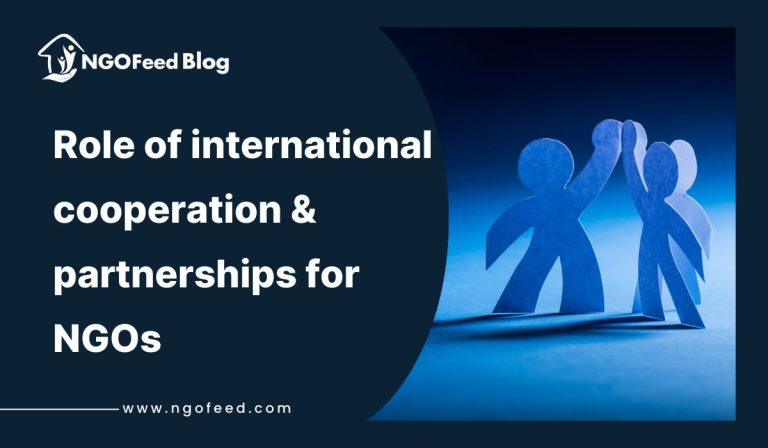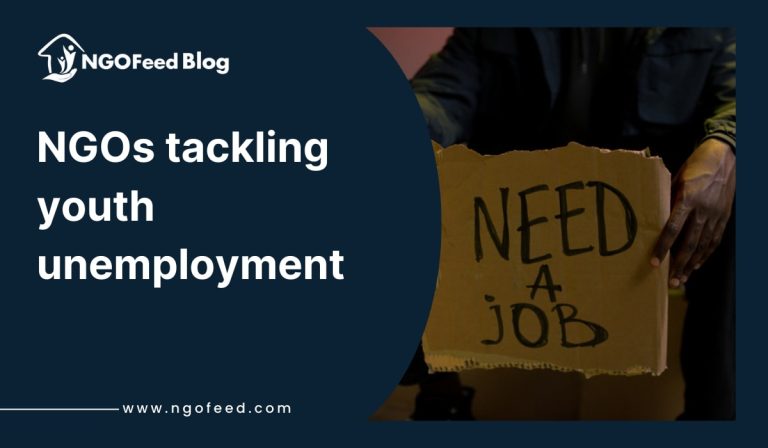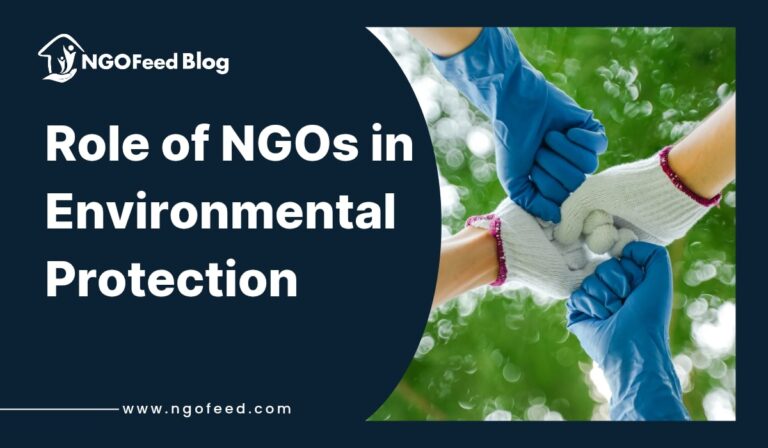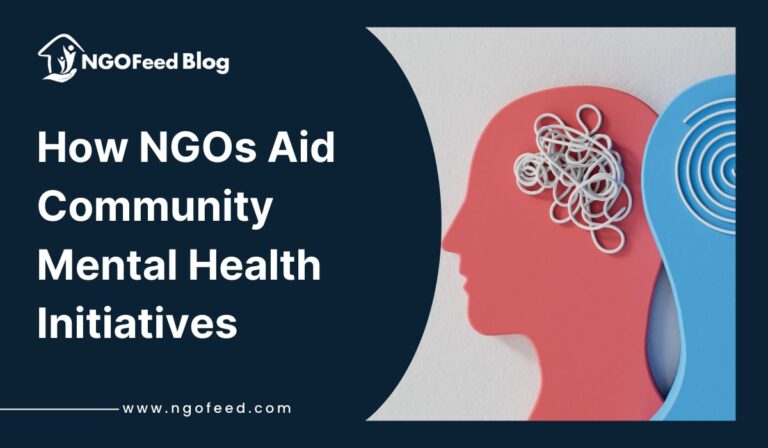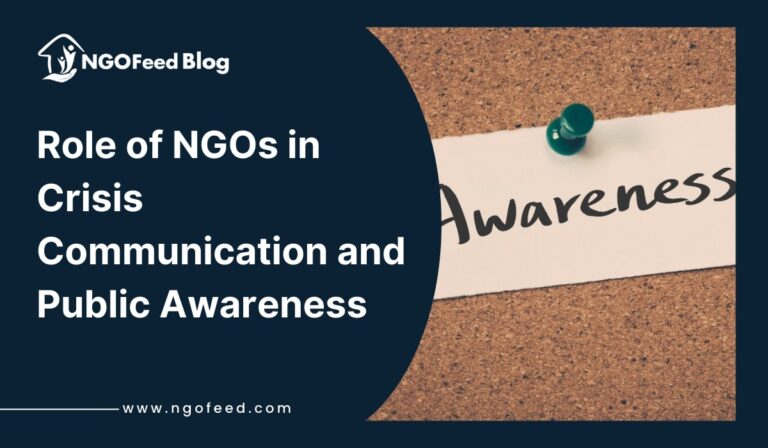Role of Indian NGOs in UN SDGs: Non-governmental organizations (NGOs) have been central to the 2030 Agenda from day one: they deliver frontline services, generate data, advocate for policy change and mobilize financing and partnerships. Yet despite their contributions, global SDG progress is lagging. The UN’s official 2024 SDG progress report finds only about 17% of SDG targets are on track, with nearly half showing minimal or moderate progress and more than a third stalled or regressing due to pandemic scars, conflict, climate shocks and structural inequities.
Table of Contents
Role of Indian NGOs in UN SDGs
At the same time, the financing gap remains stark. OECD analysis estimates the annual SDG financing shortfall in developing and emerging economies widened from $2.5 trillion to $4 trillion between 2015 and 2022, and could swell to $6.4 trillion by 2030 without significant reform.
1) The big picture: NGOs are indispensable, but the world is off-track
NGOs are increasingly involved in designing blended-finance vehicles, accountability mechanisms and last-mile delivery to stretch every dollar.
2) Trend: Localizing the SDGs, shifting power and resources closer to communities
What’s happening? A defining trend since 2019 is the “localization” of the SDGs—aligning city, district and community plans with national SDG frameworks. NGOs are key intermediaries between communities and subnational governments, helping to co-design local indicators, pilot solutions and scale through public systems.
Why does it matter? Subnational actors control large shares of public investment; partnering with them multiplies NGO impact and embeds successful pilots in public budgets. NGOs also bring participatory methods like citizen assemblies, social audits and grievance systems that strengthen local accountability and uptake.
Also Read: UNDP India Research on Poverty Reduction and Climate Change Adaptation
Evidence and signals
- Local and regional government constituencies at the UN’s High-Level Political Forum (HLPF) have emphasized partnerships with civil society to “rescue the SDGs,” placing localization at the core. NGOs frequently co-author Voluntary Local Reviews (VLRs) and help translate national goals into ward-level action plans.
- OECD data underscore the importance of subnational public investment for sustainable development, reinforcing why NGO-government partnerships at local level are leverage points.
What do effective NGOs do?
- Build municipal capacity (planning, data, and procurement) alongside service pilots.
- Share open tools (dashboards, costed plans, budget trackers) that governments can adopt.
- Convene multi-stakeholder compacts so business, academia and citizen groups co-own delivery.
3) Trend: From “implementers” to “co-architects” in national SDG governance
What’s happening? NGOs have moved upstream into policy and monitoring. Countries present Voluntary National Reviews (VNRs) at the HLPF; civil society now regularly contributes shadow reports, citizen-generated data, and consultation processes that shape VNR chapters and follow-up actions.
Evidence and signals
- UN DESA’s VNR guidance explicitly calls for multi-stakeholder participation, including civil society, in both the process and the published report. Toolkits from networks like the TAP Network and SDG16+ hub have normalized NGO roles in VNR accountability and data generation.
- Case studies (e.g., Sightsavers) document how sustained NGO engagement has improved accessibility, inclusion, and indicator coverage in national SDG reporting.
What effective NGOs Do?
- Help ministries define credible baselines; fill data gaps (gender, disability, informal work).
- Produce independent “people’s reviews” to pressure-test government claims.
- Translate VNR commitments into time-bound national action plans with budget tags.
4) Trend: Data for the development of NGOs as SDG evidence engines
What’s happening? Citizen-generated data (CGD), community mapping and NGO administrative data now complement official statistics. This is particularly critical for SDG 16 (peace, justice, strong institutions) where data gaps were historically widest. NGOs work with UN agencies and national statistical offices to standardize, validate and integrate these datasets.
Evidence and signals
- The 2024 global progress update on SDG 16 notes significant progress closing indicator data gaps compared to 2015 but much more is needed, especially in fragile contexts. Civil society contributions have been pivotal to surfacing “hidden” issues like under-reported violence or barriers to justice.
What effective NGOs Do?
- Co-design indicators with statistics offices; publish methodologies openly.
- Use ethical, privacy-aware tech (anonymization, consent protocols).
- Close the loop by returning insights to communities and service providers for action.
Also Read: The Role of Greenpeace India in Environmental Research and Advocacy
5) Trend: Financing innovation of NGOs as catalysts for blended and results-based finance
What’s happening? With public budgets constrained, NGOs are helping design instruments that stretch scarce funds: blended-finance partnerships, pay-for-results (including social impact bonds), pooled funds for community-based organizations, and climate-SDG linkages.
Evidence and signals
- The OECD’s “Finance for Sustainable Development” work tracks the widening gap and the need to mobilize private capital at scale while protecting development additionally, and equity. NGOs often serve as the impact “integrity” partners in these structures.
- Donor ODA flows to and through civil society remain significant, but the quality of funding—flexible, core, multi-year—lags behind best practice, prompting calls (and some reforms) to enable civil society per the OECD DAC Recommendation on Enabling Civil Society.
What effective NGOs Do?
- Build robust MEL (monitoring, evaluation, and learning) systems to credibly price and reward outcomes.
- Advocate for core support to local partners, not only projectized subgrants.
- Ensure community safeguards and equity are built into financing terms.
6) Trend: Rights-based advocacy, protecting civic space to achieve the goals
What’s happening? NGOs in India have secured SDG 16 commitments on participation, access to information, and fundamental freedoms—hard-won norms that underpin delivery across all Goals. Yet civic space has constricted in many countries, threatening SDG progress.
Evidence and signals
- CIVICUS reports and HLPF interventions consistently show that when freedoms of association, expression, and peaceful assembly are curtailed, SDG progress—especially on gender, inequality, and accountability—suffers. Protecting civic space is thus not a “nice-to-have” but a structural enabler.
What effective NGOs Do?
- Use strategic litigation, media coalitions, and international mechanisms to defend civic freedoms.
- Mainstream do-no-harm and digital security practices in programming.
- Invest in local leadership (youth, women, Indigenous groups) to broaden legitimacy.
7) Trend: Cross-goal integration: health, climate, and equality as force multipliers
What’s happening: Complex shocks (climate, conflict, and pandemics) expose how Goals interlock. NGOs increasingly design integrated programs (e.g., climate-resilient primary health; livelihood + nature-based solutions; learn-to-earn pathways for girls) rather than siloed projects.
Evidence and signals
- UN and UNESCO convenings around the 2024 HLPF highlight education, digital, and climate competencies as central levers to accelerate multiple Goals simultaneously. NGOs are key delivery partners in these cross-cutting efforts.
What effective NGOs Do?
- Identify 2–3 “mutually reinforcing” Goals in every project design.
- Share costed integration models with ministries to unlock pooled budgets.
- Publish cross-sector evidence (e.g., how girls’ education improves climate resilience and income).
Also Read: International Rescue Committee Research on Refugee and Migrant Support in India
8) Trend: Independent monitoring and “social compacts” to keep SDGs accountable
What’s happening: Beyond VNRs, NGO coalitions produce annual “stocktake” reports, track budget allocations, and convene social compacts—public commitments with governments and business tied to clear milestones.
Evidence and signals
- Civil society’s Progressing National SDG Implementation series reviews official VNRs, identifies gaps, and spotlights good practice for participation and accountability. These parallel reviews nudge governments toward stronger evidence and follow-through.
What effective NGOs Do?
- Create public dashboards comparing commitments vs. delivery.
- Institutionalize citizen hearings ahead of budget cycles.
- Use Right-to-Information laws and open-contracting tools to monitor spending.
9) Where NGOs’ impact is most visible?
SDG 1 & 2 (No Poverty, Zero Hunger)
- Community-driven social protection enrollment, last-mile cash/voucher delivery, and climate-smart agriculture extension led by NGOs have protected vulnerable households amid price shocks and climate events. Evidence from HLPF 2024 debates suggests more systematic scaling is needed to catch up by 2030.
SDG 3 (Good Health)
- NGOs anchor primary care outreach, immunization demand generation, and digital health registries in underserved areas—especially where public systems are thin. Integrated health-nutrition-WASH models show outsized returns when embedded with local authorities (linking to SDG 6 and 13). (General synthesis; see HLPF/UNESCO integration signal.)
SDG 4 (Quality Education)
- From remedial learning to EdTech for remote areas, NGOs co-create curricula and teacher support with ministries. Programs that add gender-responsive features (safe transport, menstrual health) simultaneously advance SDG 5.
SDG 5 (Gender Equality)
- Persistent advocacy by women’s rights organizations secured stronger gender targets and budgets in national SDG plans. Yet funding for feminist movements remains limited compared to need—an area donors are beginning to address through core support and pooled funds. (Funding quality context linked to DAC Recommendation.)
SDG 13 (Climate Action)
- NGOs drive locally led adaptation: community early-warning systems, climate-resilient livelihoods, and nature-based solutions. These programs often unlock climate funds for vulnerable communities and score co-benefits for poverty, health, and equality.
SDG 16 (Peace, Justice & Strong Institutions)
- Civil society monitoring of justice services, police oversight, and access-to-information reforms improves institutional performance and public trust—key determinants of SDG acceleration. Data improvements are documented in the 2024 SDG16 indicators report.
Also Read: CARE International Studies on Women Empowerment and Livelihood in Rural India
SDG 17 (Partnerships)
- NGOs serve as “glue” for multi-stakeholder coalitions—linking academia, government, business, and communities; stewarding open data; and designing financing structures that protect equity and impact integrity.
10) Structural constraints NGOs cannot solve alone
Even the most effective NGOs hit system limits:
- Financing quality and scale: The world faces a multi-trillion-dollar gap. While NGOs help innovate, only systemic reforms (tax cooperation, debt relief, development bank capital, regulations for blended finance) can close it.
- Civic space restrictions: In countries where freedoms are curtailed, SDG delivery suffers, especially for marginalized groups. NGOs need legal protections and enabling policy environments to operate.
- Data and capacity gaps: Many national systems still struggle to absorb NGO learning at scale; co-investment in public sector capabilities is essential.
- Short-term projects: Fragmented, projectized grants undermine sustained impact; multi-year, core support remains the exception rather than the rule.
11) What the research says “works” when NGOs aim for outsized SDG impact
A. Co-create with the state from day one
Programs designed with ministries, municipalities, and regulators scale faster and endure longer—because they solve the state’s problems, not just a grant’s logframe.
B. Invest in measurement and learning
High-quality MEL systems (with cost-effectiveness metrics and open data) enable results-based financing and policy uptake. In areas like SDG16, civil society data collaborations with UN agencies are closing critical gaps.
C. Champion rights and participation
NGOs that pair service delivery with rights-based advocacy (access to information, gender equality, disability inclusion) see stronger, more equitable outcomes across multiple Goals.
D. Localize leadership and money
Funding community-based organizations through equitable partnerships (overhead coverage, decision-making power, and multi-year support) improves relevance and durability—an emphasis mirrored in emerging donor guidance.
Also Read: Research by ActionAid India on Women’s Rights and Social Inclusion
E. Build coalitions for systems change
The most powerful NGO strategies are coalition plays: social compacts around a few priority targets with measurable 12–24-month milestones; transparent dashboards; and joint problem-solving that survives electoral cycles. Civil society’s parallel reviews of VNRs exemplify this accountability muscle.
12) Five practical moves NGOs can make in 2025 to accelerate SDG delivery
- Pick 1–2 “acceleration clusters.”
Combine mutually reinforcing Goals (e.g., SDG 3+6+13) in a single program with shared outcomes and a joint budget line—then publish the cost-benefit case for government adoption. (Integration emphasis reflected at HLPF 2024.) - Turn pilots into public policy.
From the start, align designs with government standards; train government staff; cost the intervention for public budgeting; and negotiate a transition plan into routine funding. - Embed citizen-generated data into national systems.
Co-develop protocols with the statistics office so community data can inform official indicators, especially where gaps persist (e.g., justice services under SDG16). - Unlock better money, not just more money.
Negotiate for core, multi-year support for local partners; use results-based contracts only when outcomes are measurable and equitable; and publish financing terms to safeguard integrity. (Consistent with the DAC Enabling Civil Society Recommendation.) - Defend the enabling environment.
Partner with bar associations, media, and international networks to protect civic space—because without freedom to organize and speak, none of the SDGs can be met.
Also Read: Research Insights from the International Labour Organisation (ILO) on Child Labour in India
Conclusion
The research picture is clear. Where NGOs are empowered to participate fully—in policy design (VNRs and national plans), in data systems (closing indicator gaps), in finance (designing fair, outcomes-focused vehicles), and in rights (defending civic space)—the SDGs move faster and more equitably. But the world is not on track. To change that trajectory before 2030, governments and donors need to:
- Protect civic freedoms and adopt the DAC Enabling Civil Society standards;
- Pool and align finance at scale (and quality), including core support for local organizations;
- Institutionalize civil society participation in SDG planning, budgeting, and review; and
- Double-down on localization so solutions take root where people live and where public money is actually spent.
Do this, and NGOs can continue to be the world’s most reliable accelerators of the 2030 Agenda—turning promising pilots into policy, data into decisions, and rights into real-world results.
Select references (for further reading)
- UN SDG Report 2024: progress update; only 17% of targets on track; drivers of regression.
- OECD—Finance for Sustainable Development: SDG financing gap rose to ~$4T; risks of widening to 2030.
- OECD—Global Outlook 2025: without reforms, gap could reach $6.4T by 2030.
- OECD DAC Recommendation on Enabling Civil Society: framework to improve civil-society funding and civic space.
- CIVICUS (HLPF/State of Civil Society): civic space and SDG16 advocacy trends.
- VNR guidance (UN DESA + toolkits): how civil society can shape reviews and accountability.
- UNDP/UNHCR/UNODC SDG16 indicators 2024: closing data gaps through multi-stakeholder collaboration.
Also Read: How LGBTQ+ Rights NGOs Navigate Hostile Regions
From Off-Track to Accelerated Action—the NGO Imperative
When the UN launched the 2030 Agenda, it envisioned a global partnership where governments, businesses, and citizens together would deliver a just, sustainable future. Yet, as noted in the beginning, we are well past the halfway mark and only a fraction of SDG targets remain on track. This sobering reality underscores that incremental efforts will not be enough.
NGOs, however, have shown that acceleration is possible. They have localized the Goals, filled critical data gaps, pioneered innovative financing, defended civic space, and integrated solutions across health, climate, equality, and justice. In short, they have proven to be the most adaptive and community-rooted actors in the SDG ecosystem.
But their potential is not limitless: systemic barriers—shrinking civic space, fragmented funding, and the massive $4–6 trillion financing gap—threaten to blunt their contributions. To turn the tide before 2030, governments and donors must unlock enabling conditions: flexible financing, institutionalized participation, and protected freedoms.
If the world can do this, the very actors who have already been keeping the 2030 Agenda alive—NGOs at every level—can help transform an off-track agenda into one that bends back toward hope, justice, and sustainability. The story that began with daunting deficits can still end with accelerated progress—if NGOs are not only included but empowered as equal partners in shaping the world we pledged to build.



